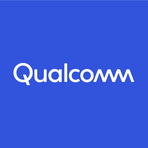The Future of Mobile: Samsung's One UI 7 and Xiaomi 15 Unveiled
October 30, 2024, 3:36 pm
The mobile landscape is shifting. Samsung and Xiaomi are leading the charge with their latest innovations. Samsung's One UI 7 and Xiaomi's 15 series are set to redefine user experience and performance. Let’s dive into the details.
Samsung is gearing up for the launch of One UI 7, a new interface that promises to enhance the user experience on its devices. Although the beta program hasn’t started yet, early glimpses are already making waves. A YouTuber recently showcased features of One UI 7, stirring excitement among tech enthusiasts. This interface is built on Android 15 and is expected to launch in early 2025.
The video reveals a customizable quick settings panel. Users can rearrange icons to suit their preferences. Imagine having your most-used features just a swipe away. Want the volume control at your fingertips? You can do that. Need quick access to your mobile data? Just drag it to the top. This flexibility is a game-changer.
One UI 7 also introduces a new approach to notifications. Users can choose to unify or separate the notification and settings panels. This choice empowers users to tailor their experience. On the lock screen, the ability to position widgets and the clock adds a personal touch. A notable addition is the option to display emergency contacts. If your phone is lost, it allows good Samaritans to reach out to someone you trust.
The buzz around One UI 7 isn’t just about aesthetics. Performance is at the forefront. According to leaks, this version will deliver the most significant performance leap yet. However, to truly harness its power, users will need the upcoming Galaxy S25 Ultra. This device will feature the Snapdragon 8 Elite processor, promising a faster and smoother experience. With 16 GB of RAM, it’s designed for heavy multitasking and demanding applications.
Samsung is not just throwing features into the mix. They are crafting an ecosystem that evolves with user needs. The beta program is expected to launch before the end of 2024, paving the way for a smooth transition to the final release. Samsung’s strategy appears to embrace transparency. By allowing early access to developers and testers, they are inviting feedback and fostering a community around their products.
On the other side of the spectrum, Xiaomi has unveiled its latest flagship, the Xiaomi 15 series. This lineup introduces the Snapdragon 8 Elite processor, a powerhouse that promises to elevate mobile performance. The Xiaomi 15 Pro stands out with its impressive specifications. It boasts up to 16 GB of RAM and 1 TB of storage. The Snapdragon 8 Elite can reach clock speeds of 4.32 GHz, ensuring lightning-fast processing.
The camera system is another highlight. The Xiaomi 15 Pro features a triple-camera setup, all 50 MP, crafted in collaboration with Leica. This partnership signifies a commitment to quality photography. The ultra-wide, wide, and telephoto lenses offer versatility for any shooting scenario. For selfies, a 32 MP front camera ensures clarity and detail.
Display technology is equally impressive. The 6.78-inch AMOLED screen supports a 2K resolution and a variable refresh rate of 120 Hz. This means smoother scrolling and vibrant visuals. The battery life is robust, with a capacity of 6,100 mAh. Fast charging capabilities—90 W wired and 80 W wireless—keep users powered throughout the day.
The standard Xiaomi 15 model shares many features with its Pro counterpart but with slight variations. It has a smaller 6.36-inch OLED display and a slightly less powerful camera system. However, it still offers a solid performance with up to 16 GB of RAM and 512 GB of storage. The battery capacity is 5,400 mAh, ensuring longevity.
Both models run on HyperOS 2, based on Android 15. However, Xiaomi's update policy falls short compared to Samsung's. While Xiaomi promises five years of updates, Samsung is pushing for seven. This difference could influence consumer choices in the long run.
Pricing for the Xiaomi 15 Pro starts at 5,299 yuan, while the base model begins at 4,499 yuan. These prices position them as premium devices in a competitive market. However, the exact launch dates for other markets remain uncertain, leaving potential buyers in suspense.
In conclusion, Samsung and Xiaomi are not just launching products; they are shaping the future of mobile technology. One UI 7 is set to enhance user interaction, while the Xiaomi 15 series promises unparalleled performance. As these companies continue to innovate, consumers can expect a landscape filled with exciting possibilities. The battle for the best smartphone experience is just beginning, and it’s a thrilling time to be a tech enthusiast.
Samsung is gearing up for the launch of One UI 7, a new interface that promises to enhance the user experience on its devices. Although the beta program hasn’t started yet, early glimpses are already making waves. A YouTuber recently showcased features of One UI 7, stirring excitement among tech enthusiasts. This interface is built on Android 15 and is expected to launch in early 2025.
The video reveals a customizable quick settings panel. Users can rearrange icons to suit their preferences. Imagine having your most-used features just a swipe away. Want the volume control at your fingertips? You can do that. Need quick access to your mobile data? Just drag it to the top. This flexibility is a game-changer.
One UI 7 also introduces a new approach to notifications. Users can choose to unify or separate the notification and settings panels. This choice empowers users to tailor their experience. On the lock screen, the ability to position widgets and the clock adds a personal touch. A notable addition is the option to display emergency contacts. If your phone is lost, it allows good Samaritans to reach out to someone you trust.
The buzz around One UI 7 isn’t just about aesthetics. Performance is at the forefront. According to leaks, this version will deliver the most significant performance leap yet. However, to truly harness its power, users will need the upcoming Galaxy S25 Ultra. This device will feature the Snapdragon 8 Elite processor, promising a faster and smoother experience. With 16 GB of RAM, it’s designed for heavy multitasking and demanding applications.
Samsung is not just throwing features into the mix. They are crafting an ecosystem that evolves with user needs. The beta program is expected to launch before the end of 2024, paving the way for a smooth transition to the final release. Samsung’s strategy appears to embrace transparency. By allowing early access to developers and testers, they are inviting feedback and fostering a community around their products.
On the other side of the spectrum, Xiaomi has unveiled its latest flagship, the Xiaomi 15 series. This lineup introduces the Snapdragon 8 Elite processor, a powerhouse that promises to elevate mobile performance. The Xiaomi 15 Pro stands out with its impressive specifications. It boasts up to 16 GB of RAM and 1 TB of storage. The Snapdragon 8 Elite can reach clock speeds of 4.32 GHz, ensuring lightning-fast processing.
The camera system is another highlight. The Xiaomi 15 Pro features a triple-camera setup, all 50 MP, crafted in collaboration with Leica. This partnership signifies a commitment to quality photography. The ultra-wide, wide, and telephoto lenses offer versatility for any shooting scenario. For selfies, a 32 MP front camera ensures clarity and detail.
Display technology is equally impressive. The 6.78-inch AMOLED screen supports a 2K resolution and a variable refresh rate of 120 Hz. This means smoother scrolling and vibrant visuals. The battery life is robust, with a capacity of 6,100 mAh. Fast charging capabilities—90 W wired and 80 W wireless—keep users powered throughout the day.
The standard Xiaomi 15 model shares many features with its Pro counterpart but with slight variations. It has a smaller 6.36-inch OLED display and a slightly less powerful camera system. However, it still offers a solid performance with up to 16 GB of RAM and 512 GB of storage. The battery capacity is 5,400 mAh, ensuring longevity.
Both models run on HyperOS 2, based on Android 15. However, Xiaomi's update policy falls short compared to Samsung's. While Xiaomi promises five years of updates, Samsung is pushing for seven. This difference could influence consumer choices in the long run.
Pricing for the Xiaomi 15 Pro starts at 5,299 yuan, while the base model begins at 4,499 yuan. These prices position them as premium devices in a competitive market. However, the exact launch dates for other markets remain uncertain, leaving potential buyers in suspense.
In conclusion, Samsung and Xiaomi are not just launching products; they are shaping the future of mobile technology. One UI 7 is set to enhance user interaction, while the Xiaomi 15 series promises unparalleled performance. As these companies continue to innovate, consumers can expect a landscape filled with exciting possibilities. The battle for the best smartphone experience is just beginning, and it’s a thrilling time to be a tech enthusiast.

